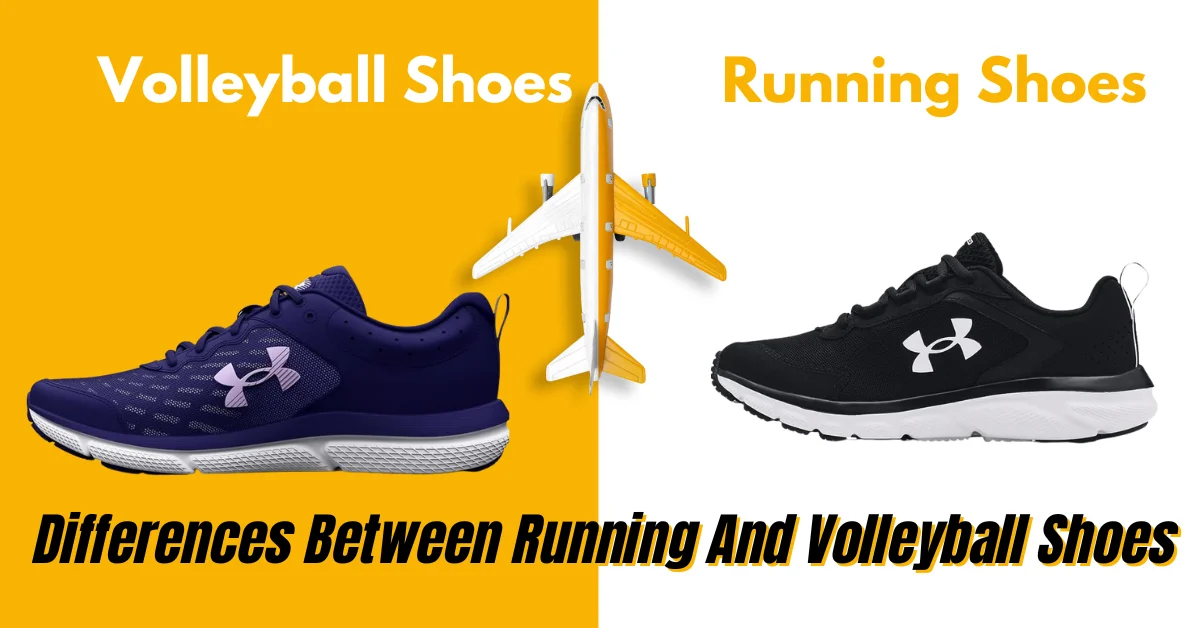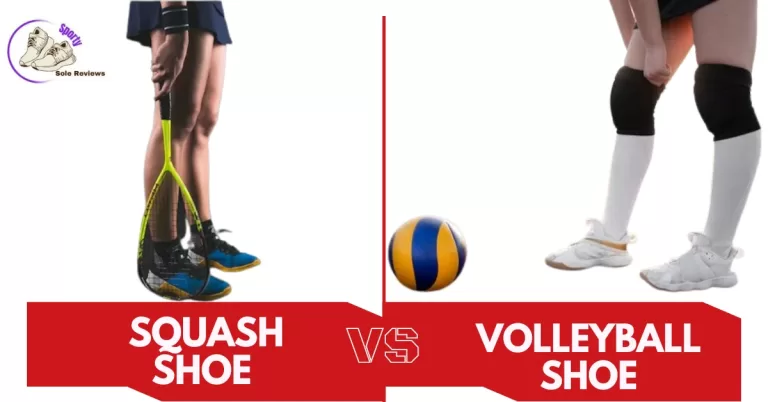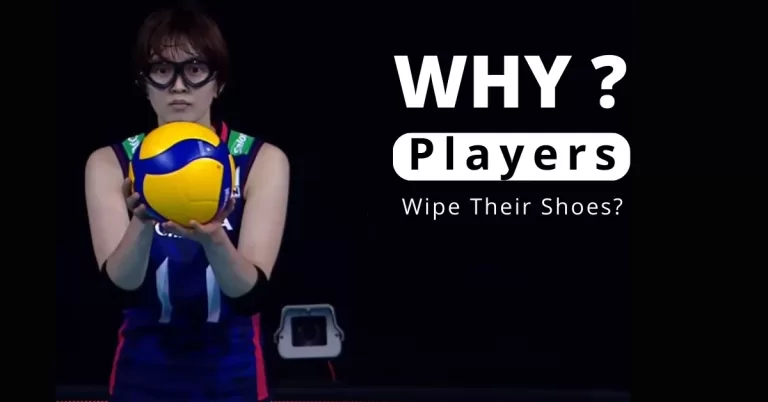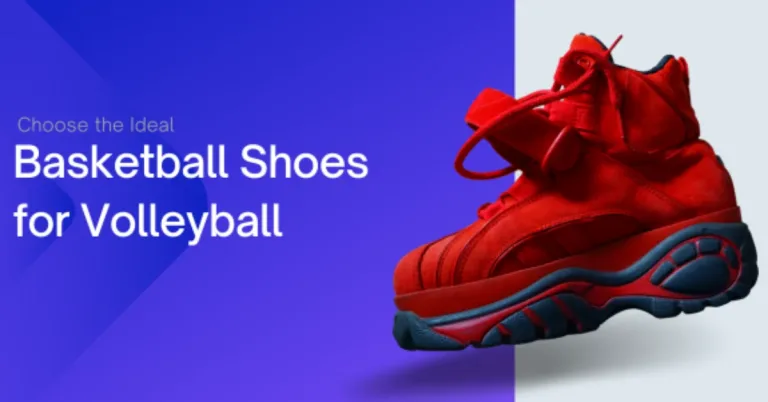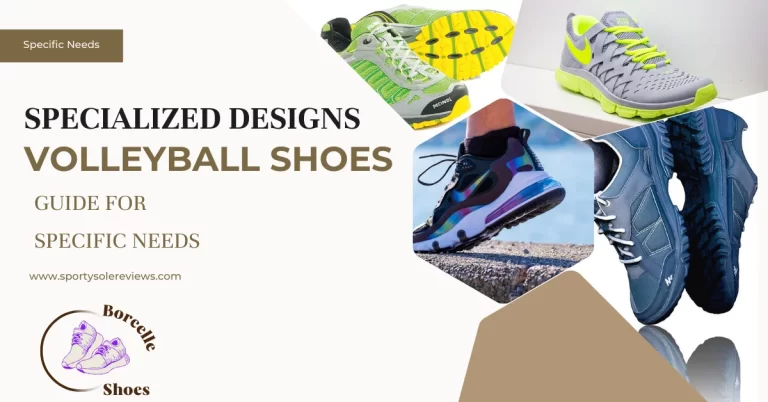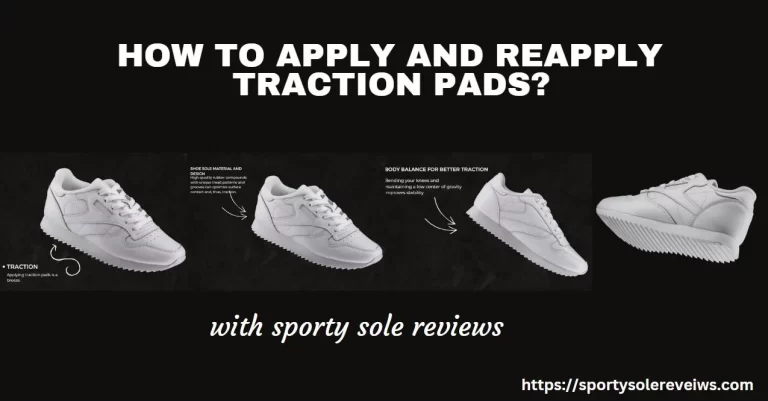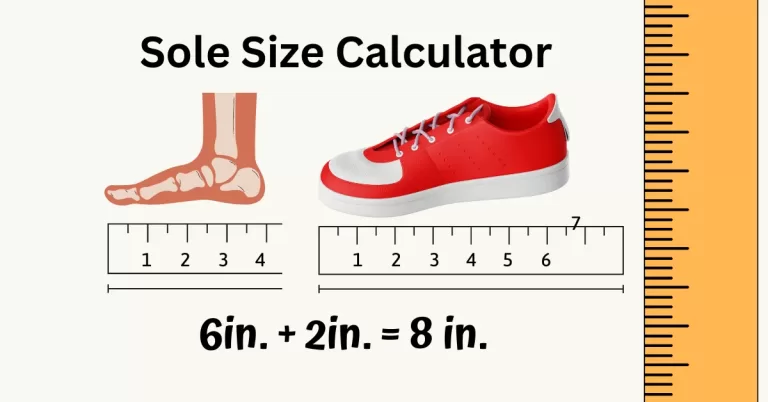Step Up Your Game: Volleyball vs Running Shoes- 9 Points
Many people have wondered if they could use their running shoes for volleyball. In the past, I have been worried about this topic, but there’s a common misconception here. To understand it better, I will explore the differences between running and volleyball shoes. This will help you realize why choosing the appropriate footwear matters for excelling in volleyball.
Understanding the Differences Between Volleyball vs running Shoes
Stepping into sports means stepping into the right shoes. 🏐🏃♂️I guide you on understanding the contrasts between volleyball vs running shoes – from court grip to cushioned strides. Get ready to make an informed choice for every sprint, jump, or spike!
Running shoes and volleyball shoes are designed with specific athletic activities in mind, and as such, they have distinct features tailored to the demands of each sport. Understanding the differences between these two types of shoes can help you make informed choices based on your individual needs and preferences.
Sole Design:
- Running Shoes: Running shoes typically feature a cushioned and supportive sole that helps absorb impact forces generated during repetitive forward motion. They often have thicker and softer midsoles to provide shock absorption and stability for heel-to-toe transitions.
- Volleyball Shoes: Volleyball shoes prioritize quick lateral movements and stability. Their soles are flatter and often have a gum rubber compound, which offers excellent traction on indoor courts and enables precise lateral movements and quick pivots.
Upper Construction:
- Running Shoes: Running shoes often have breathable uppers designed to promote airflow and keep feet cool during prolonged activities. They focus on providing comfort over extended periods of time.
- Volleyball Shoes: Volleyball shoes emphasize support and protection for the foot during rapid lateral movements. They typically have reinforced toe areas and lateral support features to prevent injuries from quick direction changes and abrupt stops.
Weight Comparision volleyball vs running shoes:
- Running Shoes: While there are variations, running shoes tend to be lighter to minimize fatigue during long-distance running. The emphasis is on a balance between cushioning and weight to support endurance. lightweight shoes is around 6 to 9 ounces (170 to 255 grams) per shoe and nautral cushioned waight is 9 to 11 ounce ( 255 to 310 grams) per shoe.
- Volleyball Shoes: Volleyball shoes are generally slightly heavier due to their focus on lateral stability and durability. This weight helps prevent ankle injuries and enhances stability during dynamic court movements. The range for the weight of volleyball shoes is around 9 to 12 ounces (255 to 340 grams) per shoe. However, some lightweight models could be even lighter, closer to 8 ounces, while more supportive and durable options might be slightly heavier, closer to 13 ounces.
Cushioning vs. Responsiveness:
- Running Shoes: Running shoes prioritize cushioning and shock absorption to reduce impact on joints and muscles. The midsole materials are engineered to provide a comfortable and cushioned ride.
- Volleyball Shoes: Volleyball shoes prioritize responsiveness and quick movements. They have firmer midsoles that allow for rapid changes in direction without losing energy through excessive cushioning.
Ankle Support:
- Running Shoes: Ankle support is not a primary consideration in running shoes, as the sport involves primarily forward motion. Most running shoes have a low-cut design to allow for natural ankle movement.
- Volleyball Shoes: Volleyball shoes often have a higher cut or additional ankle support features to protect against sprains and twists during lateral movements and jumping.
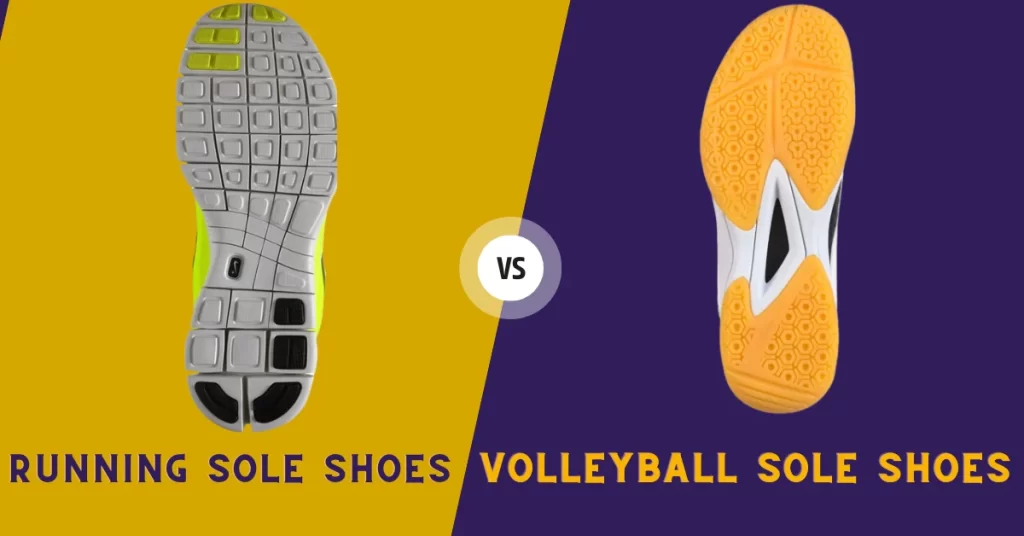
Revolutionizing Your Volleyball Game: The Dynamic Impact of Running Shoes
Running shoes might seem like a convenient option, but they can have significant drawbacks when used on the volleyball court.
Lack of Lateral Support and Stability
Running shoes are primarily designed for forward motion, lacking the lateral support needed for quick side-to-side movements common in volleyball. This can lead to a compromised balance and stability, affecting your overall performance on the court.
Potential Risks of Injury
Due to their cushioned design, running shoes may not provide the necessary support to protect against the high impact and abrupt movements characteristic of volleyball. This increases the risk of ankle sprains, knee injuries, and other potential issues.
Impact on Jumping and Landing Mechanics
Volleyball involves frequent jumping and landing, which demands specialized shoes with adequate shock absorption and stability. Running shoes may not offer the required cushioning for safe and effective jumps, potentially leading to discomfort and subpar performance.
Effects on Quick Lateral Movements
Volleyball requires rapid lateral movements to respond to the ball and position yourself correctly. Running shoes’ design may impede these movements, hindering your ability to react swiftly and navigate the court with agility.
Advantages of Using Volleyball-Specific Shoes
Volleyball-specific shoes over running shoes offer a range of advantages that can elevate your performance on the court.
Enhanced Lateral Stability
Volleyball-specific shoes are designed with reinforced lateral support, enabling you to make quick side-to-side movements with confidence and stability. This enhances your ability to respond swiftly to the ball and maintain control during intense rallies.
Reduced Injury Risk
Volleyball-specific shoes prioritize player safety. They provide targeted cushioning and shock absorption in areas prone to impact during jumps and landings. This reduces the risk of common volleyball-related injuries, such as ankle sprains and knee strains.
Improved Jumping and Landing Mechanics
Volleyball shoes feature specialized technology that supports proper jumping mechanics. They assist in generating power for explosive jumps and aid in smooth landings, reducing stress on joints and minimizing discomfort.
Conclusion
Running shoes on volleyball performance, it’s evident that volleyball-specific shoes are the way to go. Their enhanced lateral stability, optimal support for quick movements, and reduced injury risk make them essential for excelling on the court. As you prioritize your footwear choices, remember that investing in the right shoes is key to achieving optimal performance and safety in volleyball. So, gear up with the right pair and elevate your game to new heights!
Choosing between volleyball vs running shoes boils down to your game of choice. While both offer unique advantages, it’s vital to match your footwear to your sport. So, whether you’re aiming to spike on the court or blaze through miles on the track, make sure your shoe selection supports your every move.
Can I use my running shoes for playing volleyball?
While it may seem convenient, using running shoes for volleyball is not recommended. Running shoes lack the lateral support and stability required for quick lateral movements on the court, potentially leading to discomfort and increased injury risk.
This topic is volleyball vs running shoes, and both are different, so you can understand easily.
What are the potential risks of using running shoes in volleyball games?
Running shoes may not offer the necessary cushioning and shock absorption needed for jumping and landing during volleyball. This can lead to increased strain on joints, ankles, and knees, elevating the risk of injuries like sprains and strains.
What makes volleyball-specific shoes different from running shoes?
Volleyball-specific shoes are designed with features like enhanced lateral stability, a low-profile design, gum rubber outsole for indoor courts, and lightweight construction. These features cater to the specific demands of volleyball, ensuring better performance and safety on the court.
Can I use running shoes for casual volleyball games occasionally?
For casual games on an occasional basis, using running shoes might be acceptable as a temporary solution. However, for more frequent or competitive play, investing in volleyball-specific shoes is recommended for better performance and injury prevention.
Why is it essential to prioritize footwear choices for volleyball?
Proper footwear is crucial in volleyball as it affects your stability, support, and overall performance. Investing in volleyball-specific shoes can help you avoid injuries, improve your agility, and enhance your game, making them a worthwhile choice for any serious volleyball player.

